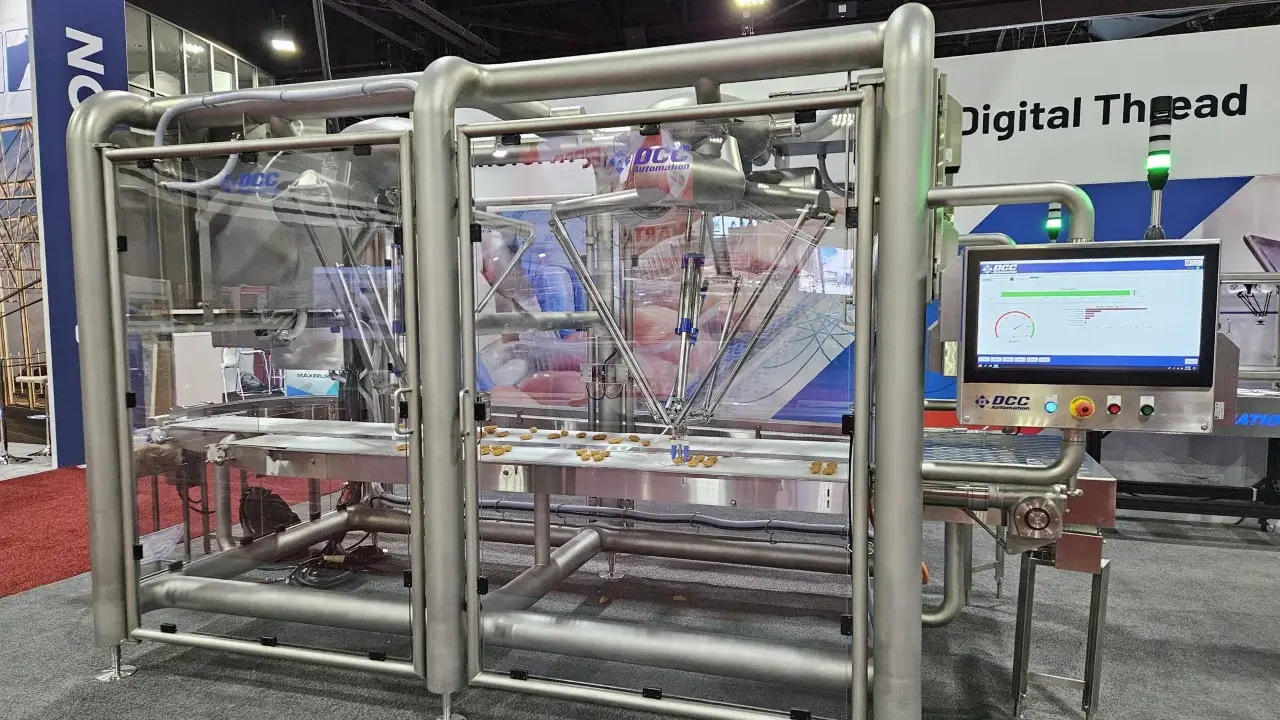
Horia Saulean
Director of Robotic Solutions, DCC Automation
Challenge
Solution
Result
Challenge
Collaborative Approach to Solution Design
Across the manufacturing landscape, profitability is always tied to production efficiency. But in the food and beverage industry, systems must often achieve not only extraordinary throughput – but also the agility to quickly transition from one product to the next.
Machine builder and system integrator DCC Automation
aims to meet the industry’s demands with material handling equipment, conveyors and turnkey systems – including custom-built primary and secondary packaging solutions. The company is part of the Rockwell Automation® PartnerNetwork™ program.
“All our solutions start with a partnership,” said Horia Saulean, director of robotic solutions, DCC Automation. “We work with customers to understand their needs and then develop solutions that deliver the most value. Increasingly, those solutions include robotics.”
The company’s collaborative approach – and robotic application expertise – led a nutrition supplement manufacturer to select DCC Automation for a new case packing solution.
Obsolete System Can’t Keep Up
The existing case packer ran on the manufacturer’s high-speed line, which handles the company’s best-selling product. The equipment included both case erecting and case packing. It ran two case patterns to accommodate two product sizes.
The semi-automated system relied on multiple controllers and conveyors that were rapidly reaching end-of-life – and experiencing up to 10% downtime each shift.
In addition, changing over the system from one product size to the other required 40 to 45 minutes. And while changeover occurred only once or twice a shift, the system needed continual adjustment to maintain correct parameters.
Finally, the case erecting and packing functions were combined in one compact machine with little room for product accumulation. As a result, the system could not achieve the 25 case-per-minute throughput required by the front of the line. Instead, two or three workers supported the operation by manually packing cases on the side.
Solution
More Efficient Design Complemented by Robotics
DCC Automation quickly identified the crux of the performance issues on the existing equipment. The obsolete control system was part of the problem. But so was the fundamental design of the machine.
“While many solutions combine case erecting and packing in one machine, we typically take a different approach in high-speed applications,” explained Saulean. “We separate the two technologies to create more space for product accumulation.”
In this instance, the case erector was placed in another part of the room. This enables products to accumulate and then be divided into efficient multiple streams, depending on the pack pattern required.
For the pick-and-place function, DCC Automation chose two-dimensional delta robots.
“On-machine robots open up a lot more possibilities than a strictly mechanical solution,” Saulean said. “The system presents the pack pattern fully formed and the case fully erected. The robots pick-and-place the complete pack pattern.”
The packed cases are inspected and top-sealed – and exit to the palletizer.
The Beauty of Unified Control
The turnkey solution runs on a Rockwell Automation platform based on Allen‑Bradley® Compact GuardLogix® controllers, Kinetix® servo drives and motors, and FactoryTalk® View HMI software. The system is integrated on an EtherNet/IP
™ network. DCC Automation also used Emulate3D™ software early in the design process to simulate and confirm system functionality.
Thanks to the capabilities of the controllers, DCC Automation used the Rockwell Automation platform for all machine operations. A separate robotic control platform was not required. Unified machine control eases design and integration – and simplifies machine operation and maintenance for users, who must only understand and support one system.
“We’ve fully embraced the Rockwell Automation control model, which enables us to use standard components and do everything in the GuardLogix controller – including safety functions,” said Saulean. “This approach delivers endless efficiency.”
Result
An Efficiency-Driven Future
With the new case packer in place, DCC Automation’s customer has significantly improved downtime and the changeover process.
The machine is up and running 99% to 99.5% of the time – and changeover takes about 5 minutes instead of 45 minutes.
In addition, the manufacturer has eliminated the supplemental manual case packing operation. The workers originally assigned to the task have been reassigned to other critical duties.
Despite these impressive gains, DCC Automation continues to collaborate with their customer to add even more agility and efficiency to the system in the future.
“This was a first-generation machine,” said Saulean. “To changeover the system, operators still must make manual adjustments. We hope to transition to a strictly recipe-driven, automated process in the future.”
DCC Automation also plans to replace some existing pneumatic operations with servo-driven technology. And to add even more efficiency, the company is migrating to FactoryTalk Optix™, a new cloud-enabled HMI visualization platform.
Learn more about OEM Solutions.


